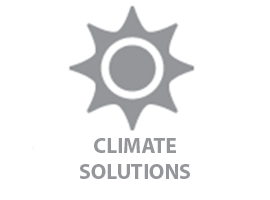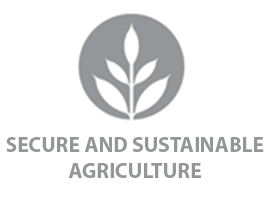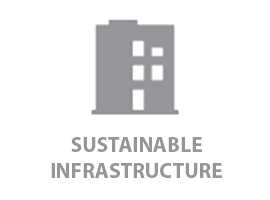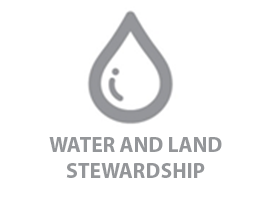Smart water disinfection project (2014-18)
Research Menu
 Current
Current
Funded
iSEE Work
 Current
Current
Funded
iSEE Work
Current
Funded
iSEE Work
Current
Funded
iSEE Work
Current
Funded
iSEE Work
Project Overview
![]()
![]() Running from 2014 to 2018, the Smart Water Disinfection Project fit into two iSEE research themes: Water & Land Stewardship; and Sustainable Infrastructure.
Running from 2014 to 2018, the Smart Water Disinfection Project fit into two iSEE research themes: Water & Land Stewardship; and Sustainable Infrastructure.
In Lead Investigator Benito Mariñas’ words: “The Smart Water Disinfection team is working to overcome the safe water challenges plaguing 10 percent of the world’s population and accounting for more than 1.8 million deaths and 870 million cases of chronic malnutrition annually.
“Our interdisciplinary team is overcoming these challenges through:
- revolutionary advances in the fundamental understanding of pathogen infectivity and its control at the molecular level;
- developing innovative smart systems incorporating real-time sensors and effective treatment technologies to control infective pathogens; and
- creating business strategies focused on long-term sustainability through local entrepreneur markets.
“These advances will allow for real-time detection and control of pathogens in an economically and technically self-sustaining model that could be implemented by local entrepreneurs in rural communities throughout the world.”
Project News
- Summer 2018 Progress Update
- Summer 2017 Progress Update
- Summer 2016 Progress Update
- Research Continues in Africa

Illinois Civil Engineering undergraduate Rachel Banoff, left, and Smart Water Disinfection project team member Kelley Goncalves perform a water quality assessment from a source in the community of Los Duros in Orocovis, Puerto Rico. Photo by Bernardo Vazquez Bravo
Primary Investigator Benito J. Mariñas reports several technical advances in 2017-18, including:
- Ultraviolet (UV) irradiation at three wavelength ranges —assessed with peak emissions at 224, 254 and 280 nanometers — helped destroy the effects of human adenovirus E1A, a waterborne virus that causes respiratory and other illnesses. The UV treatments disrupted hexon mRNA transcription, and DNA replication, but for each wavelength range different mechanisms seemed to drive these inhibitions.
- UV224 had little effect on the genome integrity after UV exposure but caused a structural modification of the capsid that might disrupt genome delivery into the host cell nucleus.
- Conversely, UV254 and UV280 did not greatly affect the viral capsid, but produced genome modifications that might disrupt mRNA transcription and DNA replication.
- Additionally, the occurrence of genome repair, particularly for UV254 and UV280, was observed by analyzing and comparing the production of late gene mRNA synthesis and DNA replication at different postinfection times. These results indicate that other regions of the genome that were not assessed in this work might be damaged during UV exposure and have different sensitivities to UV light emitted at different wavelengths.
- The combined application of monochromatic low-pressure (LP) UV light and monochloramine was assessed to control adenovirus and to evaluate synergistic interactions between both disinfectants. LP UV and monochloramine have limited capabilities to control human adenovirus when applied individually, but exploring the sequential and simultaneous application of these disinfectants could address particular needs in drinking water treatment disinfection processes. A synergistic effect was observed using a simultaneous configuration to control human adenovirus as simultaneous use of monochloramine and LP UV displayed a faster inactivation rate compared to the added contribution of both disinfectants acting independently.
 Primary Investigator Benito J. Mariñas reports several advances in 2016-17. Technically speaking:
Primary Investigator Benito J. Mariñas reports several advances in 2016-17. Technically speaking:
- Fundamental Advances: Viral pathogen inactivation mechanisms using free chlorine and ultraviolet (UV) light
- “We identified that free chlorine transforms the capsid in a manner that alters its integrity,” he said. “We are now using confocal microscopy to examine individual steps of the virus replication cycle. These findings will elucidate what are the possible proteins that are being mutagenized by free chlorine and how this disinfectant inactivates adenovirus.”
- In addition, the team found that exposure to UV irradiation that would produce a 99.99% virus inactivation does not seem to inhibit the association of HAdV-2 to the host cells. “It is quite remarkable that different UV wavelengths (UV220, UV254, and UV280), have different mechanisms of inactivation,” Mariñas said. “We now know that UV220 minimally impacted genome integrity but seemed to produce a structural transformation of the viral capsid that may inhibit the delivery of viral genome into the host cell nucleus. Quite surprisingly, it appears that UV254 and UV280 have at least two mechanisms of inactivation, which includes both mutagenesis of the viral genome and (we suspect) viral entry into the host.”
- Team members have also found that viruses are more susceptible to disinfection if treated sequentially with UV and monochloramine. “This is unexpected and may provide a new strategy for treating drinking water,” he said.
- As a second means to identify inactivation mechanisms of free chlorine, the team will perform in vitro evolution experiments in which they will isolate and propagate adenoviruses that are resistant to free chlorine. They will use deep sequencing of the genomes of these resistant adenoviruses, comparing them to the genomes of wild-type adenoviruses, to identify potential mutations responsible for resistance. “We will continue to use molecular techniques to determine how sequential application of UV light irradiation and free or combined chlorine inactivates HAdV-2,” Mariñas said.
- Innovative Sensing: Real-time detection of infective viruses
- The team has finished SELEX of aptamers for infectious adenovirus using graphene oxide to separate the DNA-adenovirus complex from non-binding DNA and obtained sequences of aptamers from the SELEX. Team members have identified and characterized DNA sequencing that are responsible for the selective binding.
- “We will continue to characterize the DNA aptamers for the infectious adenovirus and transform them into fluorescent sensors for quantitative detection, by labeling the DNA aptamers with a fluorophore and quencher,” Mariñas said. “Upon binding of the target, the fluorescent signal will increase due to changes of melting temperatures of the DNA aptamers. We will use a potable fluorimeter for such quantification.”
- In addition, to lower the costs for on-site and real-time detection, the team will label the DNA aptamer with an enzyme called invertase so that, upon binding of adenovirus, the sensing system will generate glucose, which can then be quantified by a glucose meter. For rapid semi-quantitative detection, the team will conjugate the DNA aptamer with gold nanoparticles and immobilize them onto a lateral flow device so that the binding of the DNA aptamer will result in change of color from blue to red.
- Sensitivity in terms of limit of detection and selectivity against other viruses, including non-infectious viruses, will be tested for sensing performance in water.
 Viral inactivation: Team members determined that UV irradiation emitted by a medium pressure (MP) source inactivates human adenovirus (HAdV) through different mechanisms depending on specific wavelengths. The fast inactivation of HAdV by MPUV may be a combination of direct and indirect viral capsid protein damage. The knowledge of which viral component gets affected during UV light inactivation will allow the monitoring of this pathogen in drinking water, and effectiveness inspection of water disinfection by UV light.
Viral inactivation: Team members determined that UV irradiation emitted by a medium pressure (MP) source inactivates human adenovirus (HAdV) through different mechanisms depending on specific wavelengths. The fast inactivation of HAdV by MPUV may be a combination of direct and indirect viral capsid protein damage. The knowledge of which viral component gets affected during UV light inactivation will allow the monitoring of this pathogen in drinking water, and effectiveness inspection of water disinfection by UV light.- Viral inactivation: In the case of free chlorine and monochloramine disinfection, the team has shown that mRNA production is being disrupted at the same level as the kinetic rates of virus inactivation. This means that inhibition of an event occurring at or before early gene transcription must be the cause of adenovirus inactivation. Our findings will be the foundation to develop novel effective disinfectants and rapid methods for detection of infectious viruses in drinking water.
- Detection: The mechanism for adenovirus inactivation by free chlorine remains unknown, and is most likely caused by modifications to the viral capsid resulting in host cell entry inhibition. To gain an understanding of how the major capsid proteins of adenovirus are damaged by free chlorine, the team developed a method to express the proteins in Escherichia coli. The recombinant proteins were then subjected to increasing free chlorine exposure. Several modified residues in fiber, penton base, and hexon major capsid proteins were detected that are important for viral entry. These modifications may play a role in inhibition of viral entry, thus leading to adenovirus inactivation by free chlorine.
- Detection: The team has reported a simple and highly sensitive amplified aptamer-based fluorescent sensor for AFB1, which relies on the ability of nano-graphene oxide (GO) to protect aptamers from nuclease cleavage for amplified detection and on the nanometer size effect of GO to tune the dynamic range and sensitivity. The sensor was highly selective against other aflatoxins and common molecules in foods, and its performance was verified in corn samples spiked with known concentration of AFB1.
- Local entrepreneur business implementation: The team engaged an interdisciplinary group of students in a yearlong project with field research that involved developing sensors for water tanks. Working with an NGO partner in Tanzania, team members have begun marketplace and sustainability literacy education, using trainers. The groundwork of designing materials and translating them has been completed, and co-PI Madhu Viswanathan will be traveling to Tanzania to guide training of trainers.
 SPRING 2015 — In February, Professor Benito Mariñas and Illinois students from the CEE 449 Civil and Environmental Engineering Class visited Kenya and Uganda under the umbrella of the Safe Global Water Institute (SGWI) to learn about the needs, available resources and challenges in rural communities that need safe water and proper sanitation. The 12 undergraduate students who traveled, among other things, researched fluorosis (too much fluoride in water) and anaerobic digestion of waste (turning it into energy or fertilizer). To read more, visit the students’ blog site.
SPRING 2015 — In February, Professor Benito Mariñas and Illinois students from the CEE 449 Civil and Environmental Engineering Class visited Kenya and Uganda under the umbrella of the Safe Global Water Institute (SGWI) to learn about the needs, available resources and challenges in rural communities that need safe water and proper sanitation. The 12 undergraduate students who traveled, among other things, researched fluorosis (too much fluoride in water) and anaerobic digestion of waste (turning it into energy or fertilizer). To read more, visit the students’ blog site.
Pictured left:
CEE undergraduate student Gabrielle Levato collects a water sample from a borewell while fellow Illinois undergrads perform additional water quality analyses with the help of Makerere University graduate students during a February visit to the Oruchinga Refugee Settlement in Isingiro district, Uganda.
The Team

Smart Water Disinfection Team, from left to right: Wen Cong, Bernado Vazquez Bravo, Kelley Goncalves, PI Benito Mariñas.
Primary Investigator and co-PIs
- Benito Mariñas, Professor and Head, Civil and Environmental Engineering (in team picture). His departmental page. His His Safe Global Water Institute page.
 Joanna Shisler, Associate Professor of Microbiology (right). Her departmental page.
Joanna Shisler, Associate Professor of Microbiology (right). Her departmental page. Madhu Viswanathan, Professor of Business (right). His departmental page.
Madhu Viswanathan, Professor of Business (right). His departmental page. Yi Lu, Professor of Chemistry (right). His departmental page. His lab page.
Yi Lu, Professor of Chemistry (right). His departmental page. His lab page.
Operating team: Students
- Bernardo Vazquez Bravo, Ph.D. Graduate (May 2018) and Academic Hourly Researcher in Environmental Engineering (in team picture). Read more about Bernardo and his work >>>
- Kelley Goncalves, Ph.D. Candidate in Molecular and Cellular Biology (in team picture). Read more about Kelley and her work >>>
- Wen Cong, M.S. Candidate in Environmental and Civil Engineering (in team picture).
 Anisa Nicole Hardin, M.S. Candidate in Environmental and Civil Engineering (right).
Anisa Nicole Hardin, M.S. Candidate in Environmental and Civil Engineering (right).- David Patel, MBA Candidate (not pictured).
Former team members
- Jing Jin, MBA Candidate (not pictured).
 Aimee (Gall) Moor, Ph.D Candidate in Environmental Engineering (right). Read more about Aimee and her work >>>
Aimee (Gall) Moor, Ph.D Candidate in Environmental Engineering (right). Read more about Aimee and her work >>>- Tepeina Naikuni, MBA Candidate (not pictured).
- Shiliang Tian, Ph.D Candidate in Chemistry (not pictured). Read more about Shiliang and his work >>>
- Sayed F. Toradi, Ph.D. Candidate in Biochemistry (not pictured).
Courses
(each offered twice in 2015-16):
- BADMN 332 Product Development for Subsistence Marketplaces
- BADMN 533 Sustainable Products & Business Plans
- CEE449 Environmental Engineering Lab
Publications & Presentations
(iSEE project members’ names in bold):
- Publication: “Adenovirus Replication Cycle Disruption from Exposure to Polychromatic Ultraviolet Irradiation.” Vazquez-Bravo, B.; Goncalves, K.; Shisler, J.; Mariñas, B. Environmental Science & Technology, 52 (6), pp 36523659, February 2018.
- Presentation: “Assessment of the Disruption on the Adenovirus Replication Cycle after Exposure to UV Irradiation.” Vazquez-Bravo, B.; Goncalves, K.; Shisler, J.; Mariñas, B. Association of Environmental Engineering & Science Professors (AEESP) Research and Education Conference, Ann Arbor, MI, June 20-22, 2017.
- Presentation: “Disinfection of Adenovirus in Drinking Water.” Shisler, J. Department of Biological Sciences, King Abdullah University of Science and Technology, Saudi Arabia, August 2016.
- Presentation: “Assessment of the Disruption on the Adenovirus Replication Cycle after Exposure to UV Irradiation.” Vazquez-Bravo, B.; Gonçalves, K.; Shisler, J.; Mariñas, B. 12th International Adenovirus Meeting (IAM) 2016 Conference, Barsinghausen, Germany, August 2016.
- Presentation: Invited speaker at Symposium on Secondary Coordination Sphere Influences: Stability, Reactivity & Everything in Between, the 252nd ACS National Meeting, Philadelphia, PA, August 2016.
- Publication: “Size-Dependent Modulation of Graphene Oxide-Aptamer Interaction for Amplified Fluorescent Detection of Aflatoxin B1 with Tunable Dynamic Range.” Zhang, J.; Li, Z.; Zhao, S.; Lu, Y. Analyst, 2016 (141), 4029-4034 (2016).
- Publication: “Characterizing Bacteriophage PR772 as a Potential Surrogate for Adenovirus in Water Disinfection: A Comparative Analysis of Inactivation Kinetics and Replication Cycle Inhibition by Free Chlorine.” Gall, A.M.; Shisler, J.L.; Mariñas, B.J. Environmental Science & Technology 2016, 50 (5), 2522-2529.
- Publication: “Inactivation Kinetics and Replication Cycle Inhibition of Adenovirus by Monochloramine.” Gall, A.M.; Shisler, J.L.; Mariñas, B.J. ES&T Letters 2016, 3 (4), 185-189.
- Publication: “A Bottom-Up Approach to Short-Term Immersion in Subsistence Marketplaces: Methodological and Substantive Lessons on Poverty and the Environment From Tanzania.” Viswanathan, M.; Venugopal, S.; Minefee, I.; Guest, J.S.; Mariñas, B.J.; Bauza, V.; Valentino, L.; Kupaza, R.; Jones, M. Organization & Environment 2016, 1-23, SAGE Publications DOI: 10.1177/1086026616633255.
- Presentation: Invited speaker at Precision Nanomedicine Symposium, Beijing, China, July 2016.
- Presentation: Invited speaker at The 5th International Conference on DNA Nanotechnology, Nanjing, China, July 2016.
- Presentation: Keynote lecture at International Conference on Electronic Materials (ICEM2016), Singapore, July 2016.
- Presentation: Invited speaker at Gordon Research Conference on Metallocofactor, Stonehill College, North Easton, MA, June 2016.
- Presentation: Invited speaker at Gordon Research Conference on Bioinspired Materials, Les Diablerets, Switzerland, June 2016.
- Presentation: Invited speaker at NSF Disinfection working group meeting on disinfection of viruses, May 2016.
- Presentation: Invited speaker at Department of Chemistry, University of Leicester, England, April 2016.
- Presentation: Invited speaker at Department of Chemistry, University of Oxford, England, April 2016.
- Presentation: Invited speaker at Department of Chemistry, University College Dublin, Ireland, April 2016.
- Presentation: Invited speaker at Department of Chemistry, Durham University, England, April 2016.
- Presentation: “Adenovirus disinfection processes.” Invited seminar speaker, KAUST, March 2016.
- Presentation: Invited speaker at Symposium on Transition Metal Interactions with RNA/DNA, 251st American Chemical Society National Meeting, San Diego, CA, March 2016.
- Presentation: Invited speaker at Symposium on Bioanalytical Chemistry Using the Next Generation of Nanomaterials, Pittcon 2016, Atlanta, GA, March 2016.
- Presentation: Invited speaker at Symposium on Electrical and Electrochemical Sensing and Detection based on Nucleic Acid Recognition, Pittcon 2016, Atlanta, GA, March 2016
- Presentation: Invited speaker at Metals in Biology Gordon Research Conference, Ventura, CA, January 2016
- Publication: “Waterborne Viruses: A Barrier to Safe Drinking Water.” Gall, A.M.; Mariñas, B.J.; Lu, Y.; Shisler, J.L. PLoS Pathog 2015, 11 (6), e1004867
- Publication: “Analysis of the viral replication cycle of adenovirus serotype 2 after inactivation by free chlorine.” Gall, A.M.; Shisler, J.L.; Mariñas, B.J. ES&T 2015, 49 (7), 4584-4590.
- Presentation: Gall A.; Shisler, J.; Mariñas, B. AEESP, New Haven, CT, June 2015.
- Presentation: Gall A.; Shisler, J.; Mariñas, B. Adenovirus Conference, San Diego, CA, July 2014.
Read More about Safe Water …
Follow Online
View full details about Mariñas’ Safe Global Water Institute.
Read more about Water Engineering efforts at Illinois.


